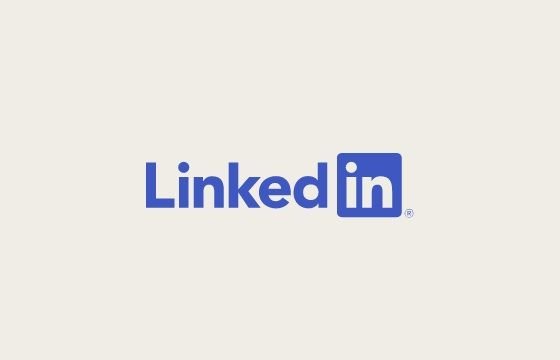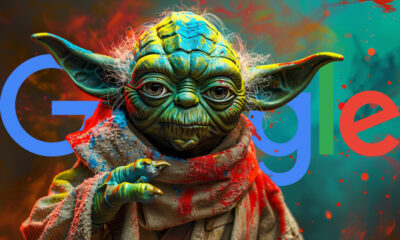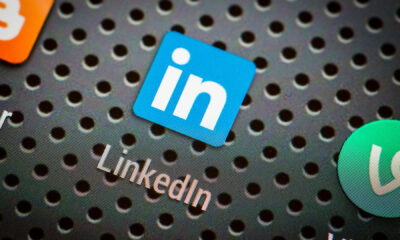SOCIAL
LinkedIn Continues to See ‘Record Levels’ of Engagement and Sessions Growth

Okay, I’m not sure I understand what ‘record levels of engagement’ means to LinkedIn.
Today, as part of its latest performance update, LinkedIn’s parent company Microsoft has shared that LinkedIn revenue grew 26% in the most recent quarter, while user sessions grew 22% – ‘with record engagement’.
Which seems fine – until you also consider that LinkedIn has reported ‘record levels’ of engagement since 2018.
More specifically:
- In October 2018, Microsoft reported record levels of engagement and LinkedIn sessions growth of 34%
- In January 2019, LinkedIn sessions rose 30% with record levels of engagement
- In April 2019, LinkedIn saw 24% sessions growth, with record levels of engagement
- July 2019 – sessions up 22%, record levels of engagement
- October 2019 – sessions up 22%, record levels of engagement and job postings
- January 2020 – sessions up 25%, record levels of engagement
- April 2020 – sessions up 26%, with record levels of engagement
- July 2020 – LinkedIn sessions grew 20% (no mention of record engagement this time around)
- October 2020 – sessions up 31% with record levels of engagement
- February 2021 – sessions up 30%, record levels of engagement
- April 2021 – sessions up 29%, record engagement
- July 2021 – sessions up 30%, record engagement
- October 2021 – sessions up 19%, record engagement
- January 2022 – sessions up 22%, record engagement
- April 2022 – sessions up 22%, record engagement
So, going on these reports, since 2018, active LinkedIn sessions have increased by some 418%, in a time where LinkedIn has added 47% more members around the world.

Is it actually possible that LinkedIn has seen ‘record levels’ of engagement growth for virtually every quarter for the last four years?
Of course, the devil is in the detail. While Microsoft has reported sessions and engagement growth, it hasn’t actually provided a scale of comparison, i.e. what exactly ‘record growth’ means in this context.
The assumption is that LinkedIn is seeing significantly more activity every quarter, but there’s no specific figure here to quantify these stats. There’s no data, for example, which says that people are commenting more on posts, or using post reactions more often, or sharing more updates.
As such, we don’t exactly know what ‘record engagement’ means. But it doesn’t seem possible that LinkedIn is breaking its own engagement record every single quarter, right? Like, if there were x million comments, x million reactions/likes, and x million shares in Q1, it couldn’t have bested those exact marks again every time.
Right?
I don’t know, it seems a little off – but according to Microsoft, LinkedIn engagement remains very strong, with sessions continuing their upward trajectory, and its member count continuing to rise.
In terms of revenue, Microsoft has reported a reduction in LinkedIn ad spend – as we’re seeing on all platforms – though even then, LinkedIn’s revenue, overall, has continued to rise.
Microsoft also notes that it’s been increasing its investment in LinkedIn, which has boosted the company’s operating expenses.
But overall, LinkedIn performance seems solid, I guess, given the limited data we have to go on.
Given the noted growth in engagement, it makes sense that LinkedIn has been putting a bigger focus on content of late, and on supporting creators, in order to help them establish stronger connections with their in-app audiences.
LinkedIn’s added newsletters and LinkedIn Live access to its Creator Mode, along with improved content analytics, while it also recently expanded its Creator Accelerator Program, which provides advice and support for rising thought leaders.
In some ways, it’s strange to think of LinkedIn looking to establish a creator ecosystem like Instagram or TikTok, where the majority of content creators are focused. But if LinkedIn wants to keep its users coming back, it needs to give them a reason to do so, and new, fresh posts from popular talent is a key way to maintain engagement, and keep the discussion going beneath its updates.
LinkedIn’s also testing Carousel posts, which are already one of the best performing content types in the app, while it’s also continuing to build out its events and live video tools.
In combination, LinkedIn is well positioned to capitalize on the market recovery that will follow in the wake of the pandemic. Which may take some time, but eventually, hiring activity will ramp up once again, and LinkedIn is now the place to be to showcase your skills and capabilities within a professional context.
SOCIAL
Snapchat Explores New Messaging Retention Feature: A Game-Changer or Risky Move?

In a recent announcement, Snapchat revealed a groundbreaking update that challenges its traditional design ethos. The platform is experimenting with an option that allows users to defy the 24-hour auto-delete rule, a feature synonymous with Snapchat’s ephemeral messaging model.
The proposed change aims to introduce a “Never delete” option in messaging retention settings, aligning Snapchat more closely with conventional messaging apps. While this move may blur Snapchat’s distinctive selling point, Snap appears convinced of its necessity.
According to Snap, the decision stems from user feedback and a commitment to innovation based on user needs. The company aims to provide greater flexibility and control over conversations, catering to the preferences of its community.
Currently undergoing trials in select markets, the new feature empowers users to adjust retention settings on a conversation-by-conversation basis. Flexibility remains paramount, with participants able to modify settings within chats and receive in-chat notifications to ensure transparency.
Snapchat underscores that the default auto-delete feature will persist, reinforcing its design philosophy centered on ephemerality. However, with the app gaining traction as a primary messaging platform, the option offers users a means to preserve longer chat histories.
The update marks a pivotal moment for Snapchat, renowned for its disappearing message premise, especially popular among younger demographics. Retaining this focus has been pivotal to Snapchat’s identity, but the shift suggests a broader strategy aimed at diversifying its user base.
This strategy may appeal particularly to older demographics, potentially extending Snapchat’s relevance as users age. By emulating features of conventional messaging platforms, Snapchat seeks to enhance its appeal and broaden its reach.
Yet, the introduction of message retention poses questions about Snapchat’s uniqueness. While addressing user demands, the risk of diluting Snapchat’s distinctiveness looms large.
As Snapchat ventures into uncharted territory, the outcome of this experiment remains uncertain. Will message retention propel Snapchat to new heights, or will it compromise the platform’s uniqueness?
Only time will tell.
SOCIAL
Catering to specific audience boosts your business, says accountant turned coach

While it is tempting to try to appeal to a broad audience, the founder of alcohol-free coaching service Just the Tonic, Sandra Parker, believes the best thing you can do for your business is focus on your niche. Here’s how she did just that.
When running a business, reaching out to as many clients as possible can be tempting. But it also risks making your marketing “too generic,” warns Sandra Parker, the founder of Just The Tonic Coaching.
“From the very start of my business, I knew exactly who I could help and who I couldn’t,” Parker told My Biggest Lessons.
Parker struggled with alcohol dependence as a young professional. Today, her business targets high-achieving individuals who face challenges similar to those she had early in her career.
“I understand their frustrations, I understand their fears, and I understand their coping mechanisms and the stories they’re telling themselves,” Parker said. “Because of that, I’m able to market very effectively, to speak in a language that they understand, and am able to reach them.”Â
“I believe that it’s really important that you know exactly who your customer or your client is, and you target them, and you resist the temptation to make your marketing too generic to try and reach everyone,” she explained.
“If you speak specifically to your target clients, you will reach them, and I believe that’s the way that you’re going to be more successful.
Watch the video for more of Sandra Parker’s biggest lessons.
SOCIAL
Instagram Tests Live-Stream Games to Enhance Engagement

Instagram’s testing out some new options to help spice up your live-streams in the app, with some live broadcasters now able to select a game that they can play with viewers in-stream.
As you can see in these example screens, posted by Ahmed Ghanem, some creators now have the option to play either “This or That”, a question and answer prompt that you can share with your viewers, or “Trivia”, to generate more engagement within your IG live-streams.
That could be a simple way to spark more conversation and interaction, which could then lead into further engagement opportunities from your live audience.
Meta’s been exploring more ways to make live-streaming a bigger consideration for IG creators, with a view to live-streams potentially catching on with more users.
That includes the gradual expansion of its “Stars” live-stream donation program, giving more creators in more regions a means to accept donations from live-stream viewers, while back in December, Instagram also added some new options to make it easier to go live using third-party tools via desktop PCs.
Live streaming has been a major shift in China, where shopping live-streams, in particular, have led to massive opportunities for streaming platforms. They haven’t caught on in the same way in Western regions, but as TikTok and YouTube look to push live-stream adoption, there is still a chance that they will become a much bigger element in future.
Which is why IG is also trying to stay in touch, and add more ways for its creators to engage via streams. Live-stream games is another element within this, which could make this a better community-building, and potentially sales-driving option.
We’ve asked Instagram for more information on this test, and we’ll update this post if/when we hear back.
-
SEARCHENGINES6 days ago
Daily Search Forum Recap: April 19, 2024
-

 WORDPRESS6 days ago
WORDPRESS6 days ago13 Best HubSpot Alternatives for 2024 (Free + Paid)
-

 MARKETING6 days ago
MARKETING6 days agoBattling for Attention in the 2024 Election Year Media Frenzy
-

 WORDPRESS6 days ago
WORDPRESS6 days ago7 Best WooCommerce Points and Rewards Plugins (Free & Paid)
-

 MARKETING5 days ago
MARKETING5 days agoAdvertising in local markets: A playbook for success
-

 SEO6 days ago
SEO6 days agoGoogle Answers Whether Having Two Sites Affects Rankings
-

 SEARCHENGINES5 days ago
SEARCHENGINES5 days agoGoogle Core Update Flux, AdSense Ad Intent, California Link Tax & More
-

 AFFILIATE MARKETING6 days ago
AFFILIATE MARKETING6 days agoGrab Microsoft Project Professional 2021 for $20 During This Flash Sale
















You must be logged in to post a comment Login